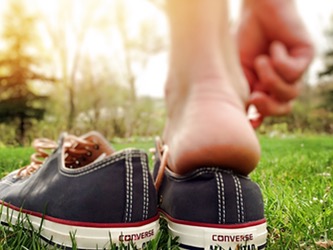
There are many different conditions causing numbness in your feet and toes. This problem is often accompanied by a tingling feeling. This problem can also cause many serious symptoms.
Therefore, it’s important to find a way to deal with numbness if you don’t want your ability to walk to be affected.
Reasons for Cure Numbness in Your Feet and Toes
Numbness in the feet and toes may arise from a range of factors, spanning benign issues to more critical medical conditions. Identifying the root cause of numbness is crucial for receiving appropriate treatment.
Below, we outline common factors contributing to numbness in the feet and toes:
- Impaired Circulation
- Nerve Compression
- Diabetes
- Peripheral Neuropathy
- Herniated Disc
- Injuries
- Vitamin Deficiencies
- Alcohol Abuse
- Toxic Exposure
- Infections
- Autoimmune Conditions
- Medications
- Circulatory Disorders
- Nerve Entrapment
Moreover, it is also the reason causing a symptom of a much more serious condition. Read this post to learn about 3 ways to cure numbness in your feet and toes.
1. Dealing With Occasional Numbness
Get moving. Sitting or standing in one place for a long time will cause numbness. So, it’s essential to stimulate circulation in the foot by moving around in order to get rid of this problem. You can also go for a short walk or even move your foot around while sitting.
- Regular exercise can help not only get rid of occasional numbness but also prevent numbness in the first place. You should incorporate some physical activity into your daily schedule.
- In order to avoid numbness in the feet, you should try lower-impact exercises such as biking and swimming.
Change positions. Don’t sit on your feet for a long period of time if you don’t want to trigger numbness. Moreover, you need to also try elevating your feet periodically to increase blood flow.
Remove excessively tight clothing. If you wear tight pants or socks, you can also suffer from numbness. So, you have to loosen them to allow for better blood flow.
Massage the foot. You can increase circulation and make occasional numbness go away faster by massaging gently the numb area on your foot.
Use a heated blanket or pad to warm your feet. In fact, when you are exposed to the cold, you can get numbness as well as tingling. Therefore, there is no reason why you don’t warm your feet in order to prevent numbness.
Wear the right shoes. If you wear high heels or too-small shoes, you can also experience numbness. So, you need to choose the proper shoes that fit you well. You can also get more comfortable with a pair of shoe insoles.
Know when to see your doctor. Occasional numbness in the feet or toes can lead to numbness frequently if it lasts for a long time. Then, see your doctor to know the exact reason.
2. Dealing With Numbness Related to Diabetes
Get a diagnosis. chronic numbness in the feet and toes is the result of diabetes. If you suffer from it, you may face damaging the nerves as well as poor circulation to your feet. It’s one of the first symptoms of diabetes.
Manage your diabetes. The most effective way to prevent circulation issues and neuropathy is to keep your blood glucose levels in check. Thus, it’s essential to get a plan with your doctor.
- Use the blood glucose meter to check your blood glucose level often a few times per year.
- Apply a healthy and balanced diet including vegetables, beans, fruits, fish, whole grains, and low-fat dairy. At the same time, avoid eating other foods such as cookies and soda.
- If you are a fan of smoking, you should ask your doctor for help quitting because it can make your condition worse.
Lose weight. Another reason for numbness is extra pounds. Therefore, you need to get some tips on healthy weight loss. Moreover, you can also lower your blood pressure as well as reduce numbness by losing weight.
Use products designed for diabetic foot care. You can ask for help from compression hose and socks in order to reduce numbness. Also, it’s great to look for containing capsaicin to relieve numbness.
Ask your doctor about alternative treatments. Relaxation and biofeedback treatment will give many benefits for the treatment of foot numbness associated with diabetes.
3. Dealing With Chronic Numbness Caused By Other Conditions
Get treatment for injuries. Numbness can occur because of injuries to the feet, ankles, toes, spine, or head. You can also ask for help from an orthopedist, chiropractor, or neurologist to relieve numbness.
Take vitamin supplements. You may get numbness due to the lack of vitamin B12 or other vitamins. It’s important to take the recommended supplements for vitamin deficiencies.
Take medication for chronic conditions. You can see persistent numbness as a symptom of underlying conditions such as arthritis, multiple sclerosis, Lyme disease, and many others. So, apply medications to treat the underlying condition in order to reduce the numbness in your feet.
Reduce your alcohol consumption. You shouldn’t drink heavy alcohol to prevent numbness because it may cause numbing sensations in the limbs both in your feet and toes.
Prevention:
As always, the best cure is always prevention. Getting proper exercise is key to having good blood flow.
If you’re having trouble getting to the gym or getting outside for a run, consider investing in a home gym. The best home gyms are actually quite affordable and will do wonders for stress, health, and mood.
Conclusion
In conclusion, you can lose some sensation in your foot if you don’t find a way to reduce the numbness in your feet.
So, it’s time to seek medical advice for numbness in your foot in order to slow or delay its progress. Hope our sharing today is helpful for you when it comes to the treatment of numbness in your feet and toes.
About The Author:
Welch Evelyn is a full-time freelance writer with 5+ years of experience. Her passion for helping people in the field of footwear, sports, as well as footwear.




